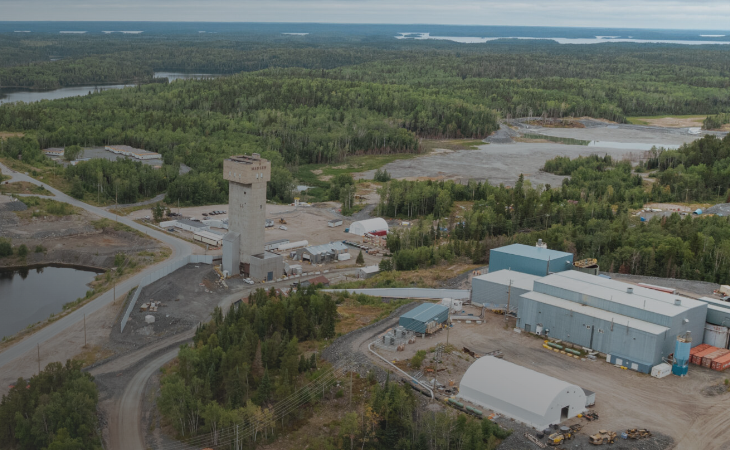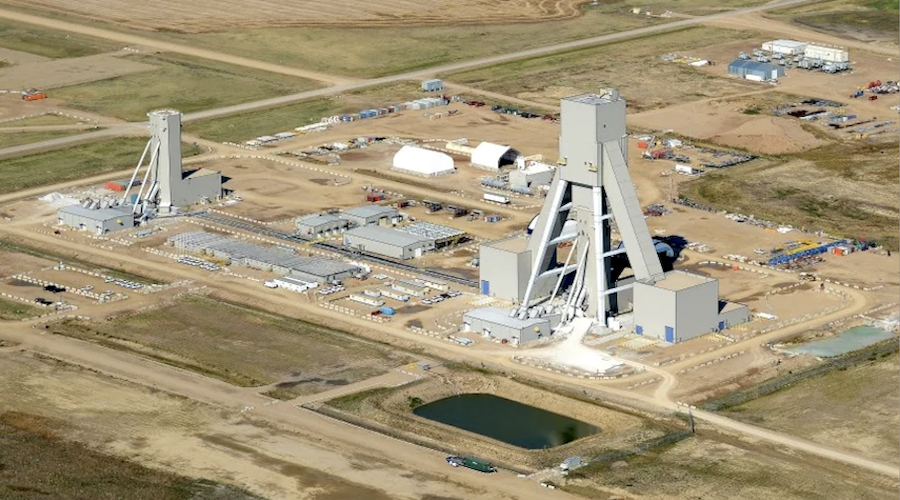VANCOUVER — It’s been a long haul for Toronto-based developer First Nickel as it strives to revive commercial production at its Lockerby nickel-copper mine outside of Sudbury, ON.
First Nickel acquired the project from Falconbridge in June 2005, and extracted 364,000 tonnes of ore during operations that were suspended in 2008 when Lockerby was put on care-and-maintenance due to low metal prices.
Initial steps towards re-commencing operations at the mine took the company through 2011. An updated feasibility study was filed, and First Nickel raised the capital necessary to refurbish its mine infrastructure and kick-start production.
According to a feasibility study put together in November 2010 Lockerby’s depth extension, which adds 6.5 years onto the mine’s life, has an internal rate of return of 50% with an US$37 million net present value at a 10% discount rate. The mine-revival project carries an initial capital price-tag of US$37.6 million. Current mineral reserves total 1.44 million tonnes grading 2.23% nickel and 1.36% copper at a 1.5% nickel equivalent cut-off.
Development activities at Lockerby over the past 18 months have included replacement of the existing haulage fleet, an optimized mining sequence, ore handling and ventilation system improvements, and a recall of the mine’s unionized workforce.
First Nickel successfully re-started ore extraction at Lockerby’s depth zone last September, and shipped 23,924 tonnes of ore to Xstrata’s Strathcona mill in Sudbury during 2011 — where First Nickel maintains a life-of-mine off-take agreement.
“We’re ramping up over the course of this year. We start the first quarter running at about four-hundred tonnes per day, and are aiming to end the year running at eight-hundred tonnes per day,” explains president and chief executive officer Thomas Boehlert during an interview. “It’s on schedule, and no problems. We put out our guidance in January, and we’re still confident in those numbers, we’re tracking to that, and there is no reason to believe we won’t meet those expectations.”
Lockerby is expected to hit steady-state by the end of 2012, with annual production equalling 10 million lb of nickel and 7 million lb of copper at average cash costs of US$6 per lb nickel equivalent.
“We’ve got that cost margin we’re comfortable with,” Boehlert says. “There is always going to be that volatility, but I think nickel has a very firm under-pinning in stainless steel and I think stainless-steel growth is just going to continue.”
According to Boehlert, the company aims to take advantage of rising costs in China’s nickel pig-iron industry, which produces roughly 15% of global-annual nickel consumption at an average-cost range of US$8 to US$9 per lb,
“The good thing from our perspective is that the costs are only going up for that sort of production because they are energy intensive,” he explains. “In business generally, you have to be somehow involved in China for the short-and-long term. I think commodities are the easiest way to participate in that growth, with the least amount of friction.”
First Nickel intends to use Lockerby as a launching pad, with the company looking to expand the mine’s life and acquire additional base-metal assets to help it grow,
“We know we have to deliver that to ensure our credibility, and I think we look at Lockerby as a starting point, there is a lot of exploration potential there,” Boehlert explains, “In parallel to the Lockerby project we are looking at other ways to grow the company, our objective here is to emerge out of the pile of junior miners and become a mid-tier, base-metal producer.”
In order to expand Lockerby’s mine-life, and meet a corporate goal of developing a second producing base-metal asset within three years, First Nickel is running an US$3.4 million exploration program in 2012. The company has 11,000 metres of drilling planned, covering three targets in southeastern Ontario.
First Nickel’s primary target will be the Link zone, which lies between the higher-grade Lockerby East deposit, with an indicated resource of 180,000 tonnes of 2.3% nickel, and the lower-grade Conwest zone, with an indicated resource of 8.5 million tonnes grading 0.5% nickel. Link was most recently drilled in 2009, when the company cut 10.6 metres carrying 1.3% nickel. First Nickel has scheduled 5,000 metres of drilling on the target this year,
“We’re going to be drilling at Link, fleshing it out a bit, and seeing how extensive the zone is, with the intention of adding to Lockerby’s reserves and resources,” explains vice president of exploration Paul Davis. “We’re drilling in there from surface because, firstly it won’t impact any of our underground operations as we proceed to ramp-up Lockerby at depth, and secondly it is something we can test where we have that previously established mineralization.”
The remaining 6,000 metres of surface drilling will be split evenly between two early-stage projects, also in southeastern Ontario, at the Raglan Hills and Belmont properties,
“Those are more grass-root, project-generative options,” Davis says. “We’re looking for mineralization similar to Vale’s Voisey’s Bay deposit, so big layered intrusions, as well as Rio Tinto’s Kennecott Eagle deposit in Northern Michigan: same age rocks, good sulphur source, alternating intrusions in the area, and forty known-nickel-copper occurrences. Southeastern Ontario is a sleeper.”
First Nickel finished the year with US$26 million cash-in-hand, though the company does not expect to see revenue streams from Lockerby until the mine moves towards commercial production in the second half of the year. Last year’s revenues stemmed from the liquidation of a hedging option worth US$35 million the company maintained due to a debt facility contract,
“We said to the banks we don’t need the loan anymore, thanks very much, and we ended the year with that cash and no bank debt with the project ramping up,” Boehlert says, “One of the things we wanted to do was get out from under that project financing as soon as possible because there were all sorts of covenants in the agreement that restricted what the company could do without going back to the banks.”
First Nickel was forced to lean on equity financing during the development process at Lockerby, and as a result has 508 million shares outstanding with a press time market cap of US$48 million. The bulk of the share dilution came last year when First Nickel arranged financings with Resource Capital Fund and West Face Capital, issuing US$33 million worth of shares at placement values ranging from 12¢ to 16¢ per unit,
“We would like to open up the interest from the investment community further, and have a broader following there,” Boehlert says. “We probably need to deal with the fact we have so many shares outstanding, but we will get around to dealing with that at the appropriate time, when it would make sense to look at the capital structure based on an acquisition or some sort of significant change.”
First Nickel has traded in a 52-week range of 4¢ to 19¢ at an average volume of 352,300 shares per day. The company had a press time close of 9¢ on the back of a 571,300 unit trade volume.
The next steps for First Nickel will involve tracking guidance at Lockerby, expanding its exploration portfolio, and achieving share traction in the face of relatively heavy dilution,
“Lockerby gives us the opportunity to develop our operating capabilities, prove our credibility, and generate cash
flow,” Boedlert says, “We can then take those operating capabilities and expertise and apply that to other mining operations, which are definitely our objective.”
First Nickel projects capital expenditures this year totalling US$16.2 million, including US$9.7 million relating to ongoing development work. With the addition of the US$3.4 million exploration program, and various administrative overheads the company should remain comfortably financed through Lockerby’s ramp-up stages to end the year.
First Nickel also has 130 million warrants outstanding at a 17¢ strike price, and an US$10-million-convertible bond that matures at the end of 2013, which could result in an additional 107 million shares hitting the market.
To read more Northern Miner articles, click here.





Comments